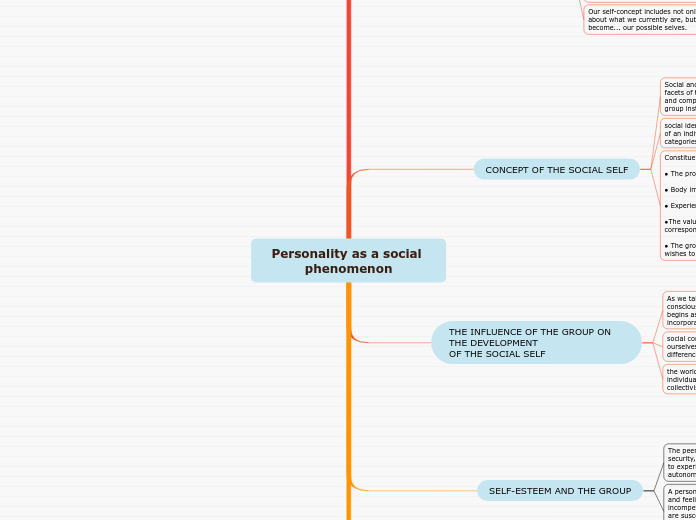Personality as a social phenomenon
To name your story, you have to think about the overall message and what you want your audience to understand from the story. Also, make it relevant and easy to remember.
DISTORTIONS IN THE PERCEPTION OF THE SOCIAL SELF
optimism defeats pessimism when it promotes self-efficacy, health and well-being. However, a dose of realism can save us from the dangers of unrealistic optimism.
Studies of perception and memory indicate that we are more aware of the results of our thinking than of the process of thinking. In probing our mental sea we manage to contemplate little beneath its conscious surface.
When we are asked why we have felt or acted in a certain way, we give plausible answers. However, when the causes and determinants are not obvious, our explanations are usually wrong. Factors with a large effect, we sometimes report as innocuous; and others with little effect, we sometimes perceive as influential.
SELF-ESTEEM AND THE GROUP
A person with low self-esteem has negative thoughts and feelings of guilt. They also exhibit behaviors of incompetence, aggression, failure to meet goals, and are susceptible to getting into trouble. This is reflected in their behaviors and attitudes towards others and life.
The peer group is a source of affection, sympathy, security, understanding and reinforcement, a place to experiment and a point of support to achieve autonomy and independence from parents
THE INFLUENCE OF THE GROUP ON THE DEVELOPMENT
OF THE SOCIAL SELF
The ending of a story is essential. We all know that if the ending is weak, what happened before loses its importance. So make it unpredictable, but fair. A resolved ending answers all the questions and ties up any loose threads from the plot.
the world is divided by 2 identity postures: individualism leading to the independent self and collectivism leading to the interdependent self.
social comparisons shape our identity; we compare ourselves with others and are aware of the differences.
As we take on a new role we may initially feel conscious of that role. Gradually, however, what begins as the representation of a role becomes incorporated into our perception of the self.
CONCEPT OF THE SOCIAL SELF
The middle of the story is where you add layers of complications that will lead to the end. Reveal more about the character's journey. Did their personality go through changes? How did they overcome the challenges? And as you build up the story’s central conflict, make it more personal to that character. Also, from the middle act, you have to lead into the final act.
Constituent elements of identity:
● The proper name and personal data
● Body image
● Experiences of social experiences
●The values of social recognition and their corresponding status symbols
● The groups to which one belongs and to which one wishes to belong.
social identity could be understood as the definition of an individual's position in a system of social categories that knows, values and accepts.
Social and individual identity are complementary facets of the same phenomenon, because a stable and complete personality also needs to belong to group instances and to identify with them.
SELF CONCEPT
In the beginning of the story (or the exposition), you will need to introduce the setting and characters. You might also want to introduce the main conflict. This part of the story is important because it gives the reader necessary background information and maybe even a first insight into a character’s personality.
Our self-concept includes not only our self-schemas about what we currently are, but also what we can become... our possible selves.
The self influences memory thanks to a phenomenon known as the self-reference effect: when information is relevant to our self-concepts, we process it quickly and remember it well.
The elements of your self-concept, the specific beliefs by which you define who you are, are your self- schemas. Schemas are mental patterns that organize our world. Our self-schemas, that is, the way we perceive ourselves.


